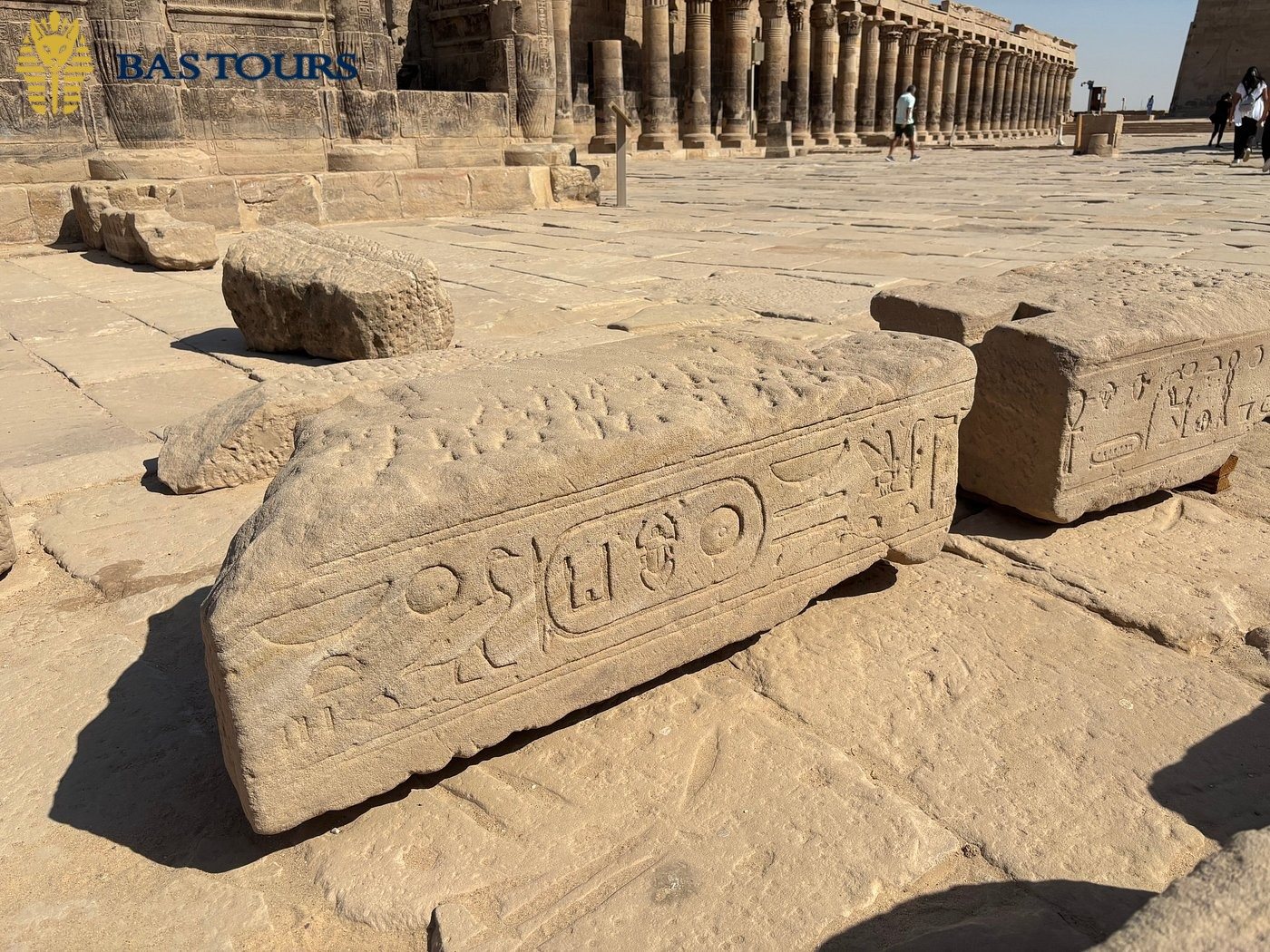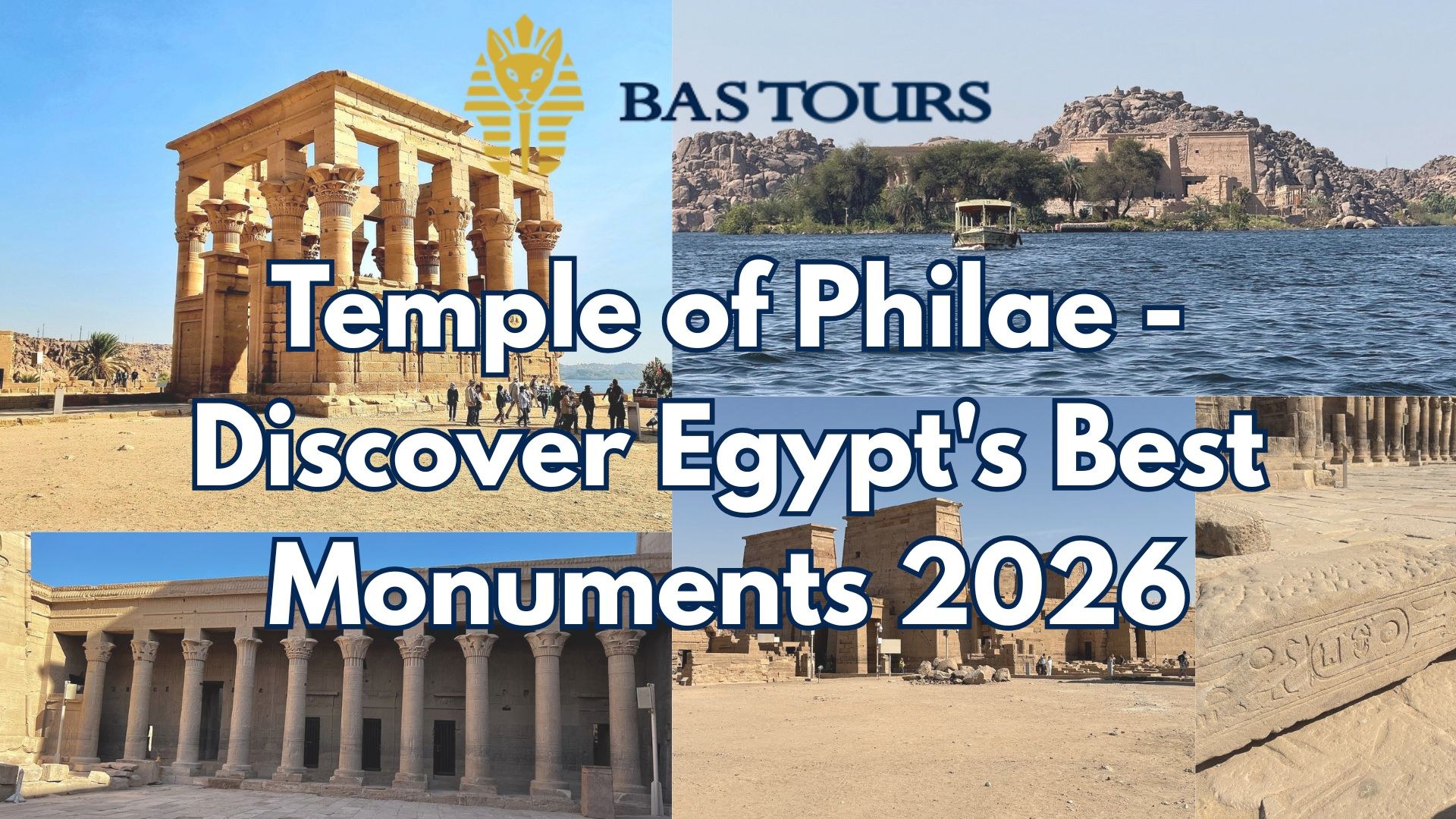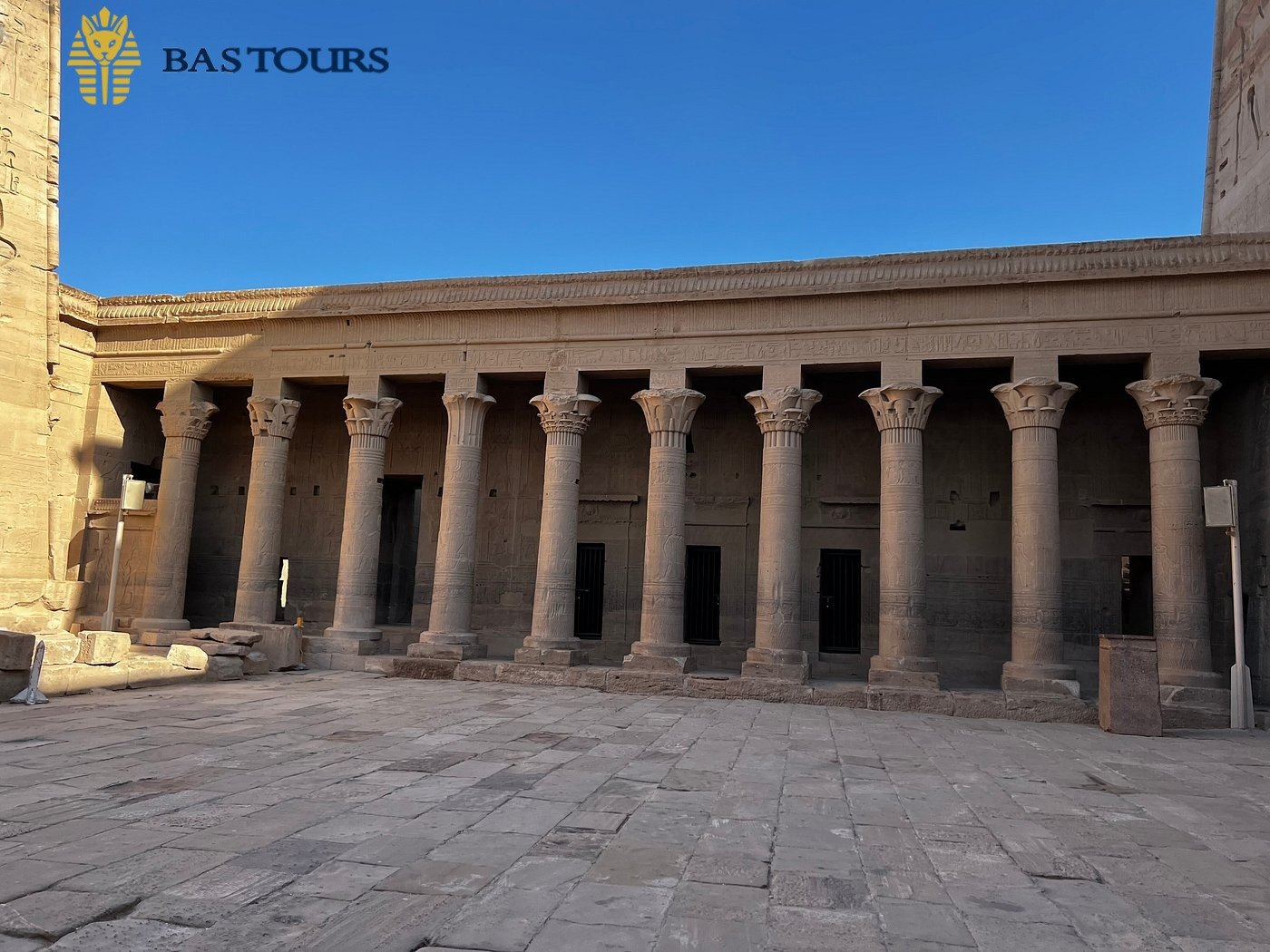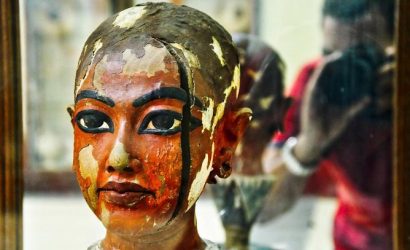When Was Philae Temple Built? – Tracing Its Origins Back to the Ptolemaic Era
The question “When was Philae Temple built” takes us back to around 280 BC, during the reign of Ptolemy II Philadelphus. Constructed on the sacred island of Philae, this temple was dedicated to Isis, the goddess of love, healing, and magic. It became a spiritual beacon for pilgrims from across Egypt and beyond. Later rulers, including Roman emperors like Augustus, added new structures, blending Ptolemaic elegance with Roman grandeur.
The temple’s enduring legacy is reflected in its well-preserved reliefs and inscriptions, chronicling centuries of devotion. Today, its origins remain a testament to Egypt’s cultural and religious richness.

Temple of Philae Architecture – A Masterpiece of Ancient Egyptian & Greco-Roman Design
The Temple of Philae architecture is a stunning fusion of ancient Egyptian traditions and Greco-Roman artistry. Its towering pylons, intricately carved columns, and symmetrical courtyards showcase the precision of Ptolemaic craftsmanship. Reliefs depict pharaohs making offerings to the gods, while Roman-era additions introduce unique decorative motifs.
The sanctuary’s alignment with the Nile reinforces its spiritual significance, as the river was central to religious life. Every architectural detail—from the floral capitals to the hieroglyph-covered walls—reflects both aesthetic beauty and symbolic meaning, making it one of Egypt’s most harmonious architectural achievements.

When Was Philae Temple Moved? – The UNESCO Rescue Mission That Saved a Treasure
The story of when was Philae Temple moved is one of the greatest heritage rescue missions in history. In the 1960s, the construction of the Aswan High Dam threatened to submerge the temple under Lake Nasser. UNESCO, along with an international team, dismantled the complex block by block and relocated it to Agilkia Island, carefully recreating its original orientation.
This colossal effort, completed in 1980, preserved not only the temple’s structure but also its spiritual context within the Nile’s landscape. Without this mission, one of Egypt’s most iconic monuments would have been lost beneath the waters forever.

Plan Your Visit – Temple of Philae Opening Hours & Best Times to Explore
Knowing the Temple of Philae opening hours is essential for making the most of your trip. The site is generally open daily from 7:00 AM to 4:00 PM in winter and from 7:00 AM to 5:00 PM in summer, though times may vary slightly during holidays. Arriving early in the morning allows you to enjoy cooler temperatures and fewer crowds, creating the perfect atmosphere to absorb the temple’s tranquil beauty. Late afternoon visits offer stunning golden-hour light, enhancing the carvings and reflecting beautifully on the Nile’s surface.
For an even more magical experience, consider attending the Philae Sound and Light Show, held on select evenings, which brings the temple’s history to life through narration, music, and lighting effects. Since reaching the site requires a short boat ride, it’s best to plan extra time for transport and ticketing. Visiting during weekdays can help you avoid peak tourist traffic. Whether you come at sunrise, when the temple is bathed in soft light, or just before closing, when the crowds thin, timing your visit well will transform your exploration into an unforgettable journey through Egypt’s sacred past.

Capture the Spirit – Photography Tips & Best Spots Around the Temple
Photographing the Temple of Philae is all about capturing its harmony with the Nile and surrounding islands. The best time for soft, golden light is early morning or late afternoon, when the sun casts gentle shadows that highlight the temple’s reliefs. Stand on the eastern side of the island for breathtaking shots of the First Pylon framed by water, or climb slightly higher ground near the colonnades for wide-angle views. Bring a zoom lens to capture the fine details of the hieroglyphics without disturbing restricted areas. Remember to keep your camera ready during the boat ride, as the approach from the water offers a dramatic perspective of the temple rising from the river.

Nearby Souvenirs & Local Crafts – Taking a Piece of Philae Home
Just beyond the Temple of Philae boat dock, you’ll find small stalls offering authentic Egyptian souvenirs and Nubian crafts. Popular items include handwoven scarves, miniature temple replicas, and jewelry inspired by ancient Egyptian motifs. Bargaining is part of the local culture, so don’t hesitate to negotiate politely. Prices typically range from $5–$30 USD, depending on the item and craftsmanship. Purchasing directly from local artisans not only gives you a memorable keepsake but also supports the community. For unique finds, look for hand-painted papyrus art or carved stone figurines depicting Isis, the goddess associated with Philae.
Return Boat Ride – Sunset Views Over the Nile
Ending your visit with a sunset boat ride from the Temple of Philae is an unforgettable experience. As the sky shifts to hues of gold and crimson, the temple’s silhouette reflects on the Nile’s calm waters, creating a perfect moment for reflection and final photographs. The gentle sound of the oars and the cool evening breeze make this ride both relaxing and atmospheric. Many visitors consider this the highlight of their trip, as it offers a serene farewell to one of Egypt’s most enchanting monuments.

Book Your Temple of Philae – Discover Egypt’s Monuments 2026 Tour with BAS Tours
Sail across the Nile to explore the breathtaking Temple of Philae, a jewel of ancient Egyptian and Greco-Roman architecture. Discover its fascinating history, from its construction in the Ptolemaic era to its remarkable UNESCO relocation. With a certified Egyptologist, private boat transfers, and personalized service, this journey offers a deep dive into one of Egypt’s most magical sites.
Price:
$95 USD per person (2+ participants)Includes: all entrance fees, private boat ride, licensed Egyptologist guide, and bottled water.
Limited slots available! Reserve early to secure your experience.
Call or WhatsApp:
Phone: +1 4373336728 | +2 01550573473
704 Weston Road, Toronto, ON, Canada M6N 3R2
Let BAS Tours bring history to life—book your Temple of Philae adventure today and immerse yourself in Egypt’s timeless beauty!
We also recommend this trip :
Best Private One Day Trip from Marsa Alam to Luxor 2026
Why is the Temple of Philae important?
The Temple of Philae is important because it represents one of the last great temples built in the ancient Egyptian style, dedicated to the goddess Isis. It holds immense religious and historical significance as a center of worship in the Ptolemaic and Roman periods. The temple complex also showcases a unique blend of Egyptian and Greco-Roman architectural styles. Moreover, its relocation during the UNESCO Nubia campaign preserved an invaluable cultural heritage threatened by the Aswan High Dam reservoir.
What are the temples of Philae?
The temples of Philae include the main Temple of Isis, which is the largest and most famous structure on the island. Surrounding it are smaller temples and chapels dedicated to other deities such as Hathor and Horus. These temples together form a significant religious complex that was a pilgrimage site for ancient Egyptians.
How old is the Philae Temple?
The Philae Temple dates back to the Ptolemaic era, approximately constructed between 280 BC and 180 BC, making it over 2,200 years old. Its use continued into the Roman period until the decline of pagan worship in Egypt.
Who is the goddess of the Temple of Philae?
The goddess of the Temple of Philae is Isis, the ancient Egyptian goddess of magic, motherhood, and fertility. Isis was one of the most widely venerated deities in Egypt, and the temple served as a major cult center dedicated to her worship.












Comments are closed